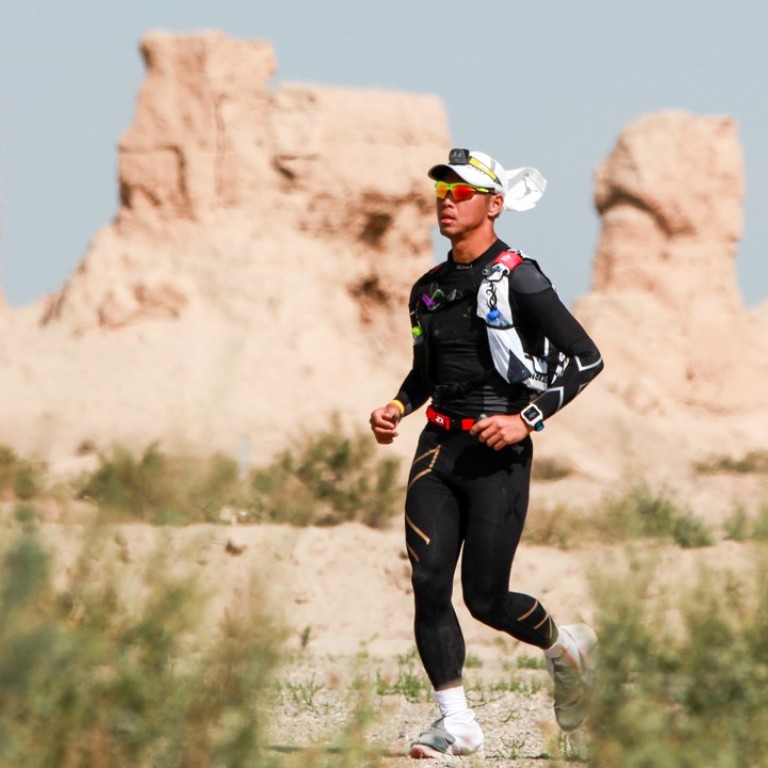
With 400km non-stop Ultra Gobi race, China pushes boundaries of extreme endurance
Crossing a desert where temperatures can go from 30 degrees Celsius by day to minus 15 at night, the race is open to just 50 runners; it is ‘the most difficult race I ever took part in’, says a Hongkonger who’s run it in 108-plus hours
Twenty years ago, a marathon was the farthest that people were supposed to run. Longer races did exist, but they were so marginal, so niche that running 100km was seen as a challenge on a par of climbing Everest or swimming the English Channel.
Nowadays, registering for a 100km gets you about as much kudos as renewing your gym membership. To get bragging rights you have to go longer and tougher, a hundred miler at least, or, if you are lucky enough to get a place, the 217km Badwater or 246km Spartathlon.
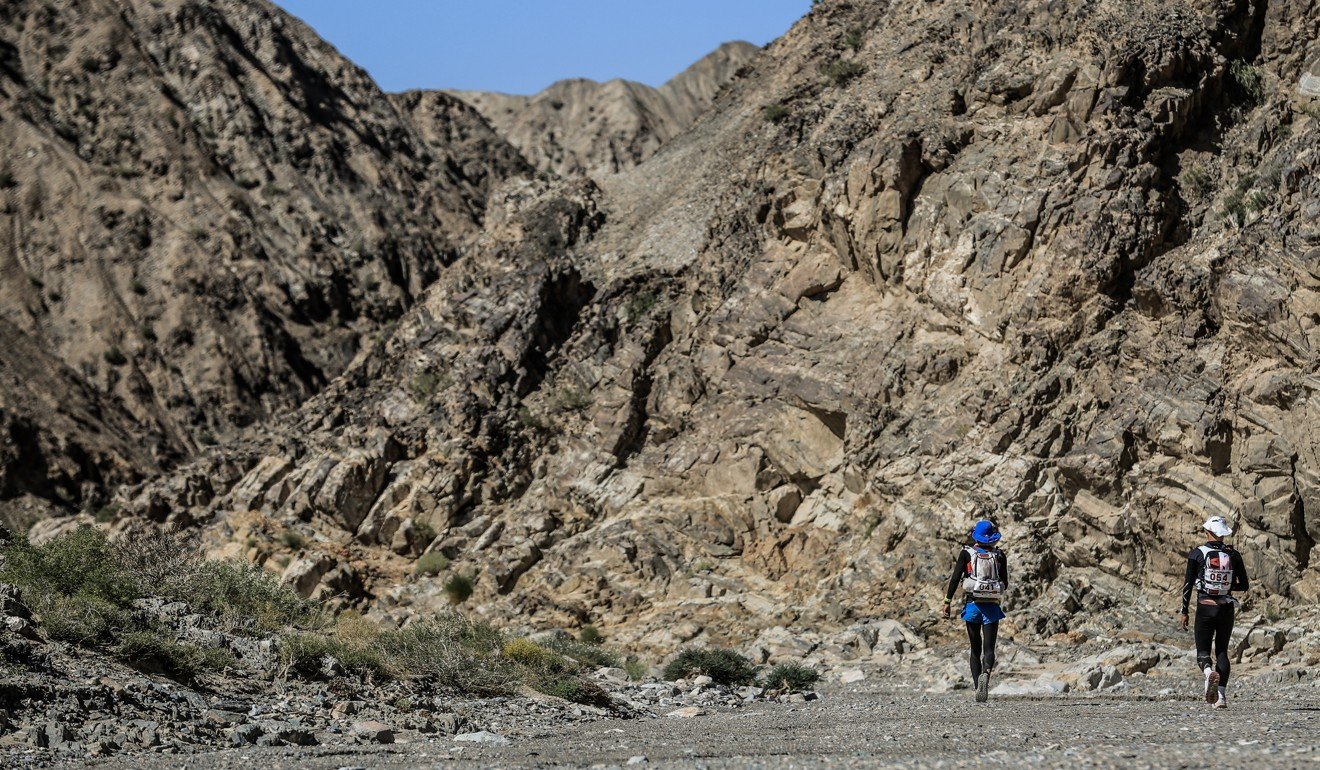
Running light and very far appeals to every runner, but the farther you run, the more food, water and equipment you need, and unless someone supplies it for you, you have to carry it yourself, which increases the load and eventually slows you down to a walk. In turn, if a race is not broken into stages, the organiser has to manage an ever-increasing section of the course as the runners spread out, which requires a lot of resources and manpower and pushes up the cost.
How Hongkonger Trilby White overcame TB and took part in women-only race in Tehran
Non-stop ultra-distance races do exist, such as the 866km Transpyrenea, but they can amount to a mass start and then an individual finish days later, with the runners left to their own devices for the entire race, with little or no support. Supporting, monitoring and reporting on a group of runners spread over hundreds of kilometres is extremely difficult to be done properly if you want to make the race commercially viable.
China catches the ultra-running bug, as businesses and government seek to cash in on trail racing’s global popularity
In China, the concept of “cannot be done” does not exist. Combine this with deep pockets and national pride and you get the 400km non-stop Ultra Gobi in Gansu province. Organised in a remote wilderness, on the budget of Dakar Rally, it is managed and supported as tightly as a city half-marathon, but limited to just 50 participants.
The idea behind this race is to allow the runners to run the distance with a minimum of equipment, just a daily backpack. The supplies – food, warm clothes, spare shoes – can be stored at the rest stations in pre-prepared drop-off bags. Once at a rest station, which are located at 30km intervals and are staffed with support personnel, and media and medical teams, the runners can rest, sleep, eat or just carry on. There is a 149-hour limit to complete the race, but what you do with those hours is up to you.
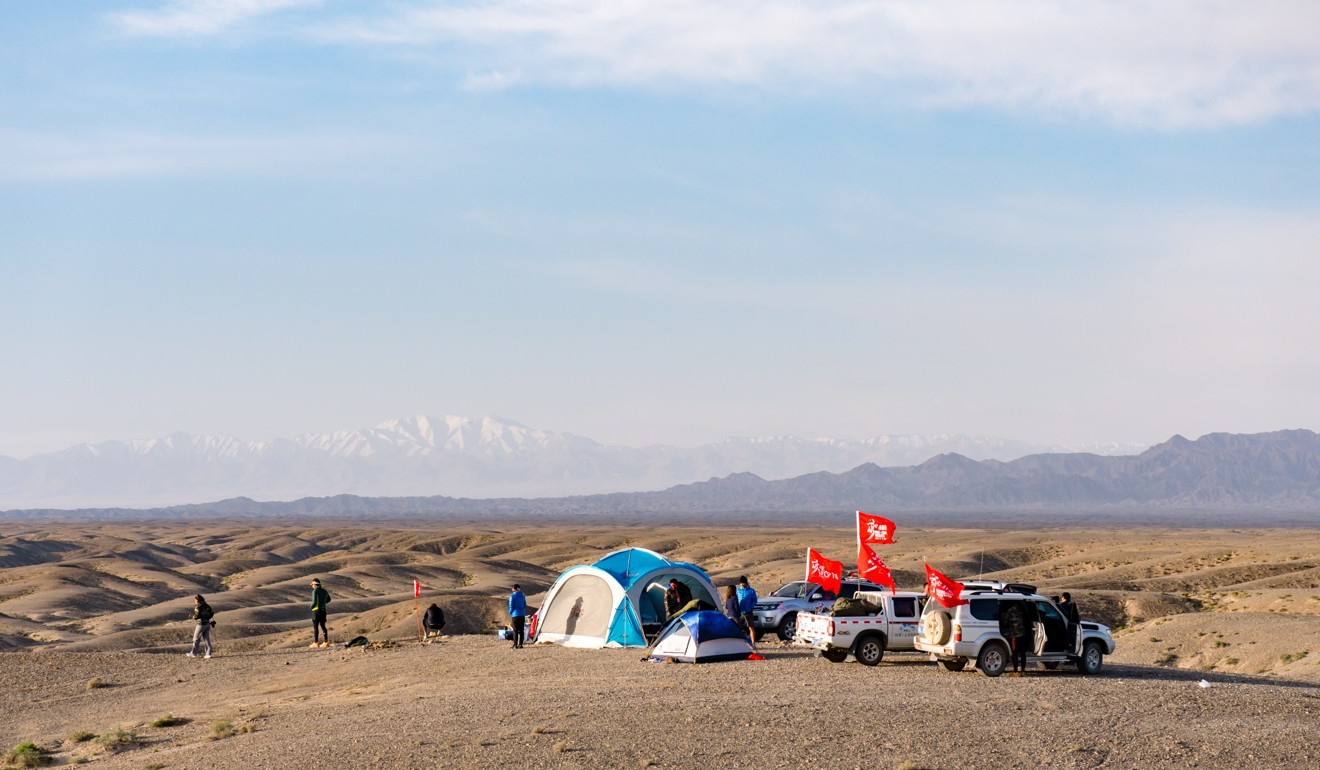
Water resupply is not an issue either – water stations, which also double as timing stations, are positioned every 10km, and to ensure safety, every runner is tracked live from the race Command and Control centre in the town of Guazhou.
Every finisher, despite the fact that the last runner completes the course almost three days behind the winner, is treated to their own firework display, photographers, an army of cheering volunteers, crowds of excited locals and a red carpet – almost 100 metres of it at a gala-like finish in Guazhou.
The motivation behind this race is not financial, says Qu Xiangdong, the owner of the company that organises the race. “We want to put China on the map. We want China to have a unique race. Ultra Gobi will be one of the world’s greatest races.”
Book review: how sport saved ultra-runner Charlie Engle
The marketing of Ultra Gobi to foreign runners has run into some cultural snags. The history behind it holds high brand recognition for Chinese, but not so for Westerners – the event is marketed as being loosely based on the journey of the Buddhist monk Xuanzang to India during the Tang Dynasty. Xuanzang’s account of his epic 17-year adventure, the Great Tang Records of the Western Regions, was the inspiration for the Chinese literary classic, Journey to the West.
“During the day the heat sears you like a flame, at night the cold cuts your flesh like a knife,” said the venerable Xuanzang of the location where Ultra Gobi is held.
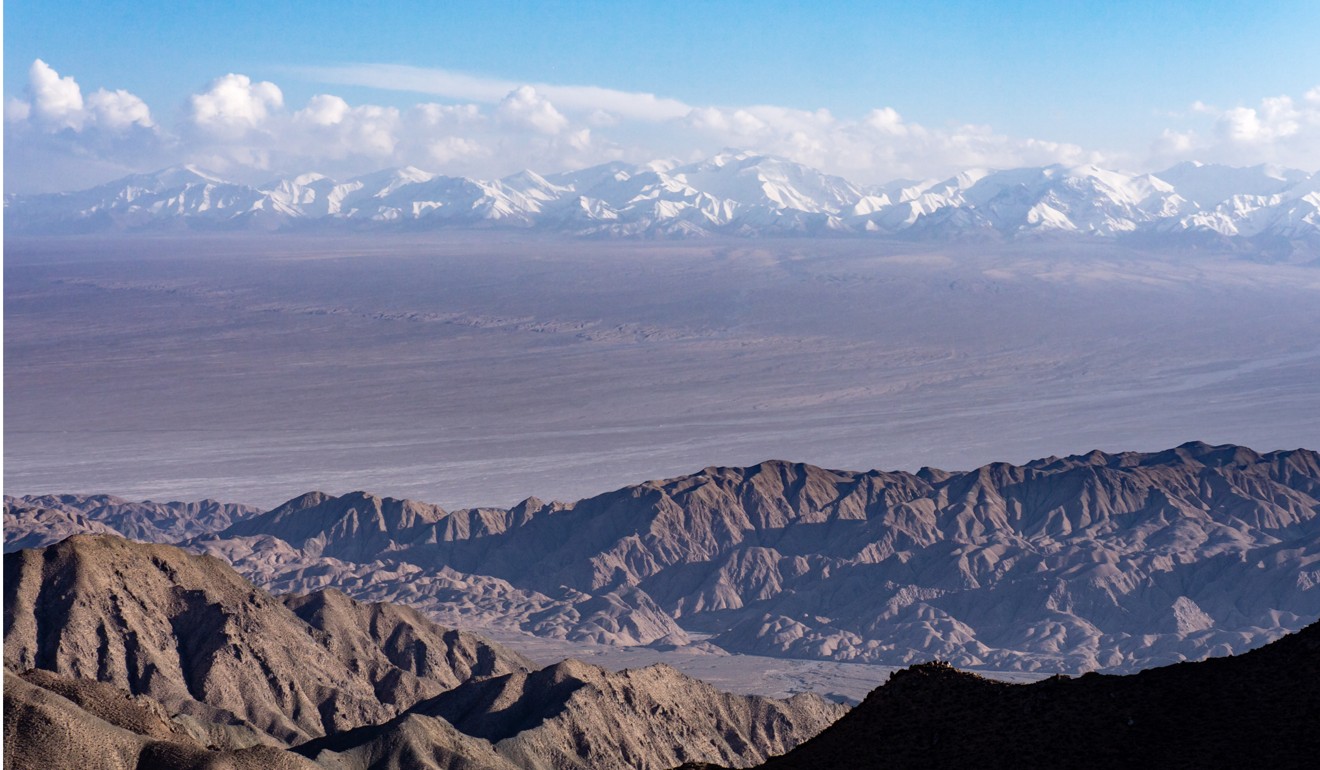
This section of the Gobi, a slice of rocky desert sandwiched between the sands of Inner Mongolia to the north and the Tibetan Plateau to the south, has a truly extreme climate: in the 2015 race the temperature plummeted from 30 degrees Celsius during the day to minus 15 at night, complete with a snowstorm and whiteout conditions.
We want China to have a unique race. Ultra Gobi will be one of the world’s greatest races
Without having done the Ultra Gobi, it is difficult to understand how it would differ from stage races. Many runners would make blasé projections – “Three days! There is hardly any elevation!” – only to find themselves a shivering wreck, feet and shoes torn to shreds by sharp rocks, with a hundred miles or so still to go. The key to success in Ultra Gobi is to control your natural instinct to race from the very start, patiently trudging barely above walking pace, preserving every crumb of energy.
How Hong Kong runner John Ellis balances trailblazing with a desk job
“In a stage race you have all your buddies around you in camp at the end of the day,” says Paul Borlinha, a highly experienced Canadian ultrarunner and iron man competitor who participated last year. “Ultra Gobi does not give you this chance to mentally regroup. Psychologically this is so much harder … and it feels endless.”
The solitude, self-reliance and sleep deprivation make Ultra Gobi a far cry from the commercialised “adventure holiday camp for adults” that many stage races have become. Runners rely on a hand-held GPS unit with an uploaded race track.
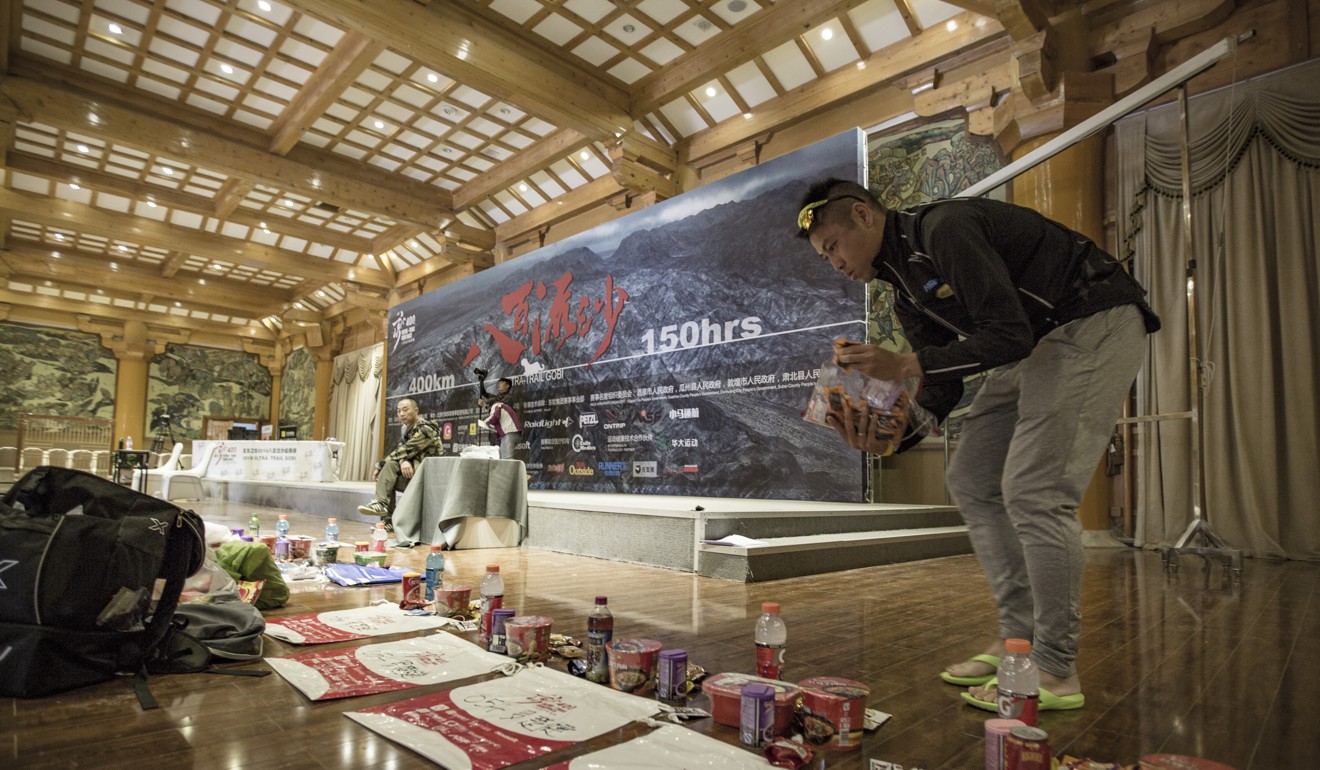
The 2016 race was won (in 92 hours, on just five hours sleep) by Bai Bin, a Chinese ultrarunner renowned for his cast-iron toughness. Two Hong Kong runners also successfully completed Ultra Gobi in 2016: Law Chor-kin was ninth in 105 hours 31 minutes, and Clement Dumont finished just ahead in eighth in 104 hours 55 minutes.
“Ultra Gobi is the most difficult race I ever took part in,” says Dumont, an elite ultrarunner and the organiser of TransLantau race in Hong Kong. “It made me learn a lot about myself, especially how to handle pain.”

This year, on September 28, some of the world’s best ultrarunners will clash in the Gobi – including the winner of the Four Desert race series, Vicente Garcia of Spain, and European 24-hour champion and Spartathlon runner-up, Dan Lawson of England.
“I am expecting Ultra Gobi to be an unbelievable challenge,” says American athlete Michael Wardian, a member of Team Hoka One One, a multiple US national champion in several ultra-distances and the World Championship silver medallist at 100km. “I have never done a race as long as this and I have never run a race where you decide when and where you will sleep or try to go without sleeping. It will push me to places that I have not been to yet.”
The 2017 Ultra Gobi starts on September 28. For details, go to ultragobi.com (field limited to 50 runners). Registration fee US$3,500

